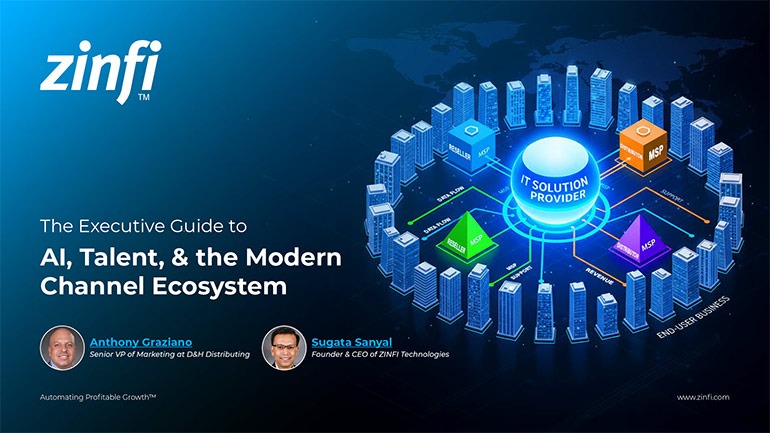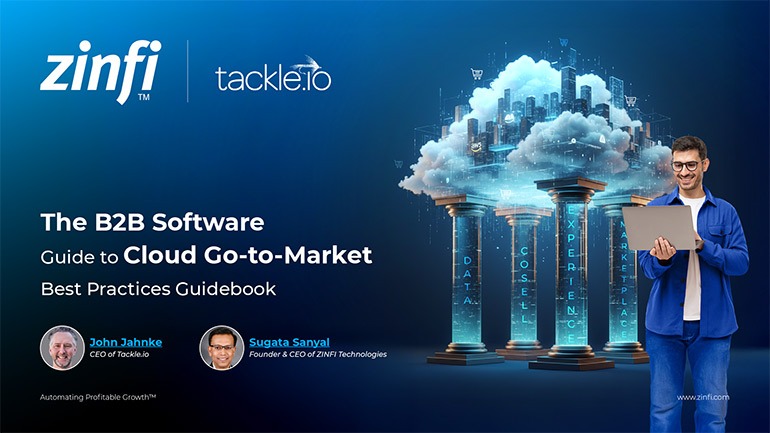Best Practices Articles

Channel Management: Ready, Set, Remote
If you suddenly find yourself relying on Zoom, Teams, Outlook and Excel to manage your channel in a world that has suddenly shut down completely, you are not alone. This article explores how you can get started on a remote management strategy for your channel partner network that suddenly needs more support faster as some deals appear to be on the verge of evaporating. My goal here is to help you set priorities for virtual collaboration so that you can be ready to respond in a fast-changing world. Much in the world today is outside your control, but you can quickly take control of your channel management approach by following a few sequential steps.
Before we begin, let’s just reflect for a moment on the intrinsic challenges that were already a part of channel management even before the pandemic damaged our economy and took away thousands of lives. We are all beginning to realize that, while managing a direct sales force is tough, managing an indirect sales force—what we all call a channel—is even tougher in times like these. This is due to the fact that resellers, agents, and other types of partners set their priorities primarily around cash flows, customers, competencies (employees) and competitors. So, while a vendor brand may be an integral part of their overall revenue plan, in the end there is always a broader (and more personalized) set of business objectives that drive any partner business. This is where the main conflict lies.
If, as I am suggesting, a partner business is not centered predominantly on a specific brand—that is, if the partner can exist without a specific product or switch it out with a different one—then brand loyalty is almost non-existent. (I realize this may not entirely be the case for captive brands or franchises, but the challenges of managing a franchise are more complex than those for a multi-product resale business or an outlet.) But whether we are talking about a captive or multi-brand channel partner, channel management is a lot more complex world than direct sales. So what can you do in times like this when resources are scarce and will possibly shrink more over the next 12–18 months—and when we are forced stay home and put channel events, trainings and various other activities on hold?
First things first – We all need to prioritize ruthlessly to remain profitable because the world is highly leveraged today. Burning more cash and hoping to get there is certainly not a prudent strategy with so much uncertainty in the air. Yes, some companies like Zoom, which was in a position to scale its data center’s capacity as its user load exploded, have thrived, but their investments scaled with their direct sales demand. When it comes to a channel business, it is crucial at times like this to focus on the producers versus the non-producers in your partner base. To do that effectively, you will need a partner profile management capability that is dynamic and gives you a dashboard that will instantly tell you which partners are winning, why and how you can make more partners win.
Second – We need to focus on selling and eliminating deal losses as fast as possible. This can only happen when you have a focused set of partners who care about your brand and are willing to learn and compete aggressively in the marketplace for every deal that is within their reach. To do that you have to make sure there is no channel conflict, and that means you must protect every deal that partners bring in and have trust in your support network.
Finally – Make sure your reward structure is crystal clear, and then put your money where your mouth is. Stay away from complicated training, enablement and incentive programs. The entire focus for the incentive program should be on motivating partners to sell more to make more. As a partner once told me, “Loyalty can always be purchased.” So, follow the money, provide a path to make it easy for partners to make money, and align all the incentives so there is absolutely no friction along the way.
To complete these three steps quickly and efficiently you need programs and people—but you also need a platform. You need software automation that allows you to profile your partners in a dynamic fashion to reveal who is selling, how much and why. You need to identify the next set of potential winning partners, rapidly roll out sales programs and train them fast. You also need to enable them with sales collateral and offer them meaningful incentives like market development funds, co-op funds and sales rewards. And you need to be able to do all of these things quickly and dynamically, 24x7. This can only happen if you augment your Zoom, Teams, Excel and other applications with a true end-to-end channel management and automation platform. This is the only way you can build a true virtual collaboration network overnight, drive up partner satisfaction and engagement and, yes, “purchase” loyalty—in a legal and friendly way.
To know more about Channel Management, please read the article - The Ultimate Guide to Channel Management.
Best Practices Guidebook
 Modernizing Channel Marketing: AI and Ecosystem Enablement Best Practices
Modernizing Channel Marketing: AI and Ecosystem Enablement Best PracticesDownload for FREE
 The Channel’s Shift to Partner-Led With AI Best Practices
The Channel’s Shift to Partner-Led With AI Best PracticesDownload for FREE
 Hyperscalers, ISVs, and AI: Shaping the Future of B2B Software Distribution
Hyperscalers, ISVs, and AI: Shaping the Future of B2B Software DistributionDownload for FREE
 Definitive Guide to a Partner Ecosystem-First Sales Strategy
Definitive Guide to a Partner Ecosystem-First Sales StrategyDownload for FREE
 The Partner-Led Digital and AI Transformation Best Practices
The Partner-Led Digital and AI Transformation Best PracticesDownload for FREE
 Startup Talent Recruitment: Hiring Missionaries, Not Mercenaries
Startup Talent Recruitment: Hiring Missionaries, Not MercenariesDownload for FREE
 The Future of Partner Relationship Management with AI in Partnerships
The Future of Partner Relationship Management with AI in PartnershipsDownload for FREE
 Cybersecurity for the 99%: Strategies from the Frontline
Cybersecurity for the 99%: Strategies from the FrontlineDownload for FREE
 Mastering Partner Relationships: A Strategic Approach to Business Growth
Mastering Partner Relationships: A Strategic Approach to Business GrowthDownload for FREE
 Mastering Partner Relationship Management: Keys to SaaS Channel Success
Mastering Partner Relationship Management: Keys to SaaS Channel SuccessDownload for FREE
 Navigating the AI Revolution: Guide for Partners in the Microsoft Ecosystem
Navigating the AI Revolution: Guide for Partners in the Microsoft EcosystemDownload for FREE
 Mastering the Modern Buyers Journey: Sales Leader’s Guide to AI & Engagement
Mastering the Modern Buyers Journey: Sales Leader’s Guide to AI & EngagementDownload for FREE










